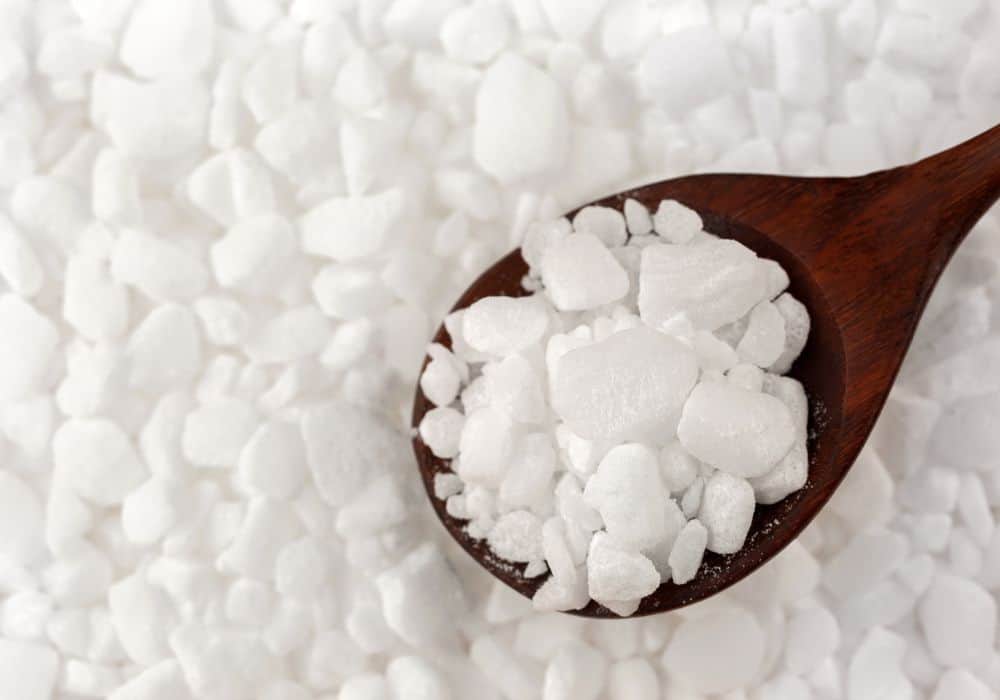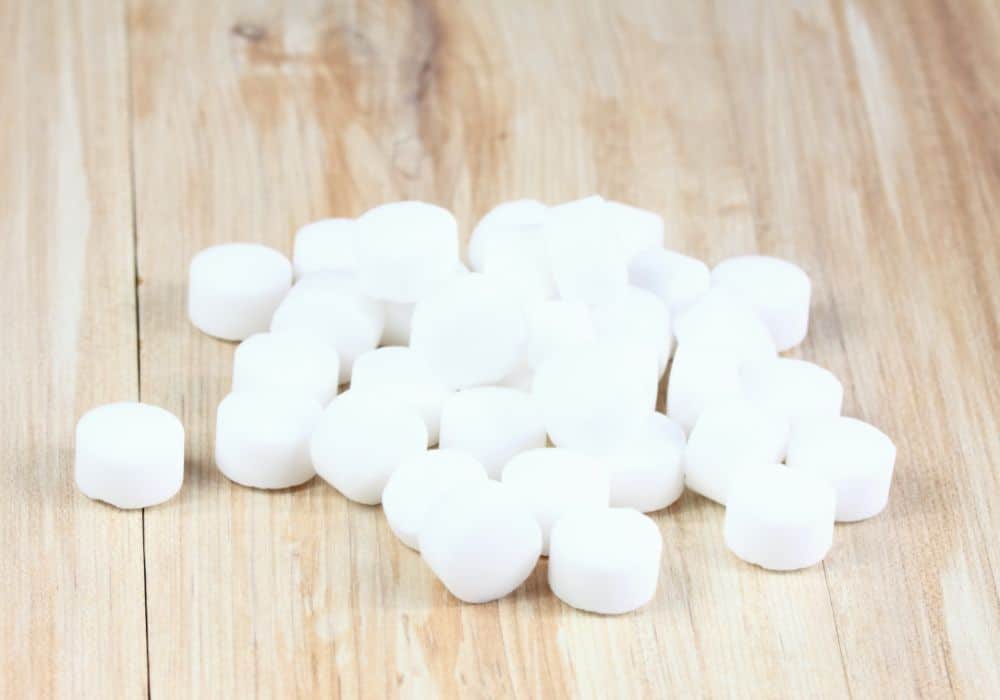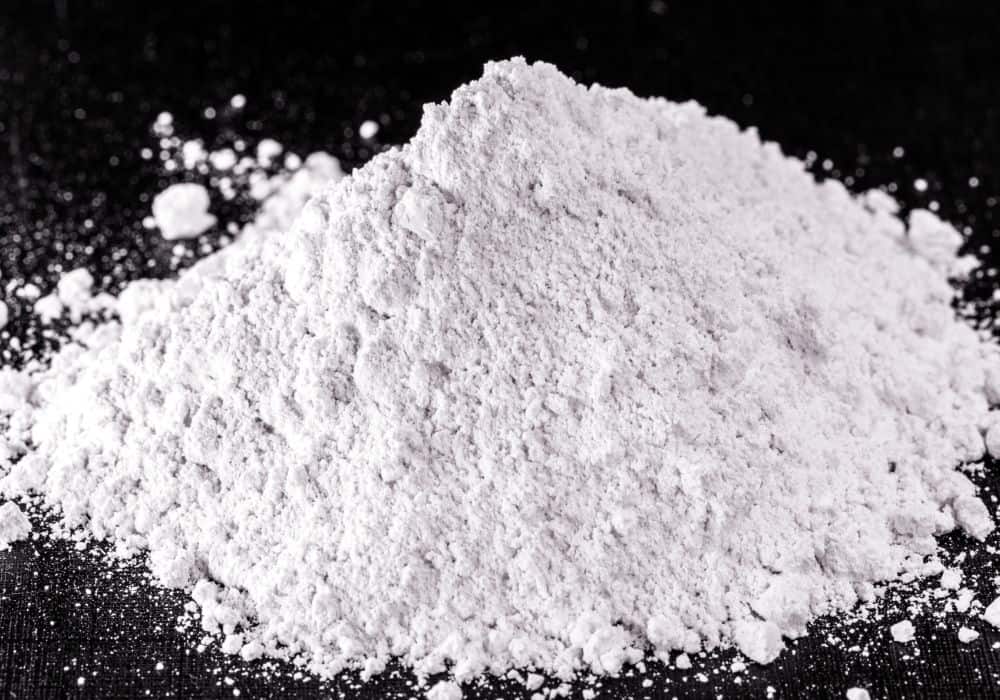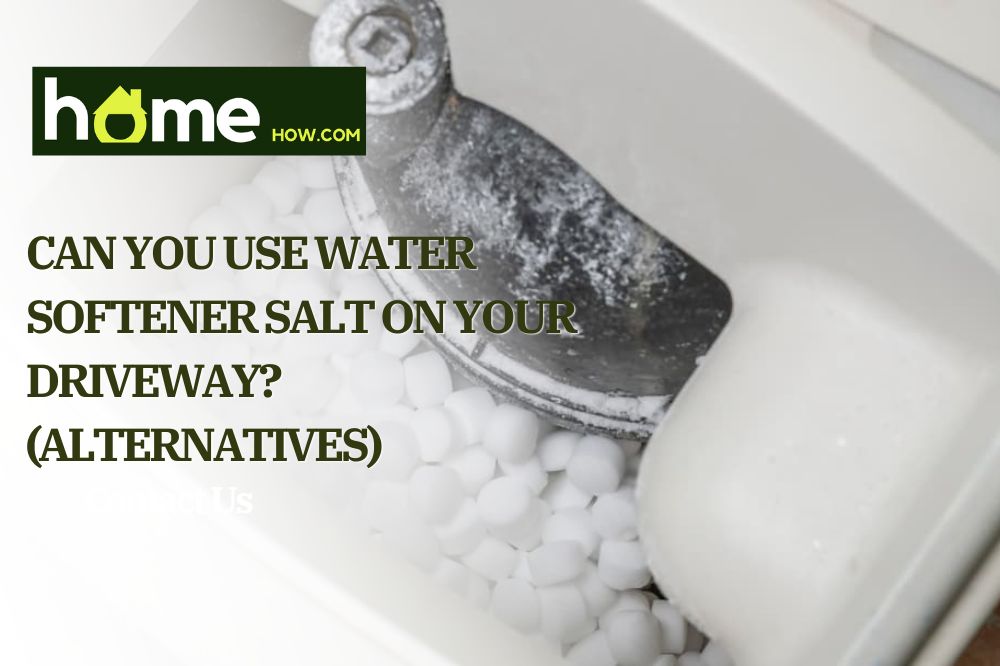Are you looking for a way to keep your driveway and steps free of ice and snow this winter? You may be wondering if using water softener salt is a viable option.
In this blog post, we will explore whether or not water softener salt can be used on driveways and steps, as well as some of the pros and cons of doing so.
By the end of this post, you should have a better understanding of whether or not using water softener salt is the right solution for you.
What Is The Difference Between Sidewalk Salt And Water Softener Salt?
Sidewalk salt, or rock salt, is unprocessed sodium chloride, containing other components such as shale, clay, and other minerals. It’s typically used to de-ice sidewalks and roads in cold weather.
In addition to making walkways safer, sidewalk salt can also help to prevent damage caused by frost heave. Frost heave occurs when water seeps into cracks in concrete and freezes, causing the concrete to expand and break.
By preventing ice from forming, sidewalk salt can help to reduce the risk of frost heave.
On the other hand, water softener salt is generally used for the purpose of softening hard water. Hard water is water that contains high levels of minerals, like magnesium and calcium.
These minerals can build up on surfaces, like pipes and showerheads, causing damage and making it difficult for dish soap and detergents to work properly.
A chemical water softener is a solution that helps to reduce the hardness of water by exchanging the magnesium and calcium ions for sodium ions.
This process is known as ion exchange, and it typically uses a chemical compound called sodium chloride, or salt. Water softener salt is a popular option for many homeowners, as they are relatively affordable and easy to maintain.
Can You Use Water Softener Salt On The Driveway?

Yes, water softener salt is ok to use to de-ice your driveway and roads. You can use water softener pellets or salt crystals – if you’re using salt pellets, make sure to crush them first.
Just sprinkle the salt over the icy areas of your driveway and then wait for the ice to melt. Depending on the size and thickness of the ice, it can take anywhere from a few minutes to a few hours for water softener salt to melt it.
The most important factor is to make sure that the salt is in direct contact with the ice. For small patches of ice, you can simply sprinkle the salt on top and wait for it to work its way down.
For larger areas or for particularly thick ice, spread a layer of salt over the surface and then wait for it to melt before adding more. In any case, it is important to be patient and give the salt time to work; rushing the process will not make the ice melt any faster.
How does water softener salt melt ice?
The key to water softener salt’s effectiveness is its ability to lower the freezing point of water. This property is known as “freezing point depression.”
By lowering the freezing point, water softener salt makes it harder for water to freeze into ice. As a result, the ice on sidewalks and driveways is less likely to form or, if it does form, is more likely to melt quickly.
Are there other types of salt you can use as a de-icer?

There are a variety of other types of salt that can be used for melting ice, including rock salt, solar salt, and table salt. Each type has its own advantages and disadvantages.
For example, rock salt is one of the most commonly used types of salt for melting ice because it is relatively inexpensive. However, it can also damage concrete and plants.
Solar salt is another popular choice because it generally does not damage concrete or plants.
However, solar salt can be more expensive than rock salt. Table salt can also be used for melting ice, but it is less effective than either rock or solar salt. In addition, table salt can damage concrete and plants.
When selecting a type of salt to use for melting ice, it is important to consider both cost and effectiveness.
In general, rock salt and water softener salt are the most effective choices, but they may be more expensive than table salt. Ultimately, the best choice depends on the specific circumstances.
Will water softener salt hurt the concrete?
You may be wondering if water softener salt will damage your asphalt or concrete driveway. The short answer is that it can, but the good news is that the damage is usually minimal and can be easily repaired.
The reason why salt can damage concrete is that it causes the concrete to expand and contract during the freeze-thaw cycle during the winter. Over time, this can lead to cracks and other types of damage.
However, as long as you keep an eye on the condition of your concrete and repair any damage promptly, it should last for many years. It is also wise to use a sealant.
A sealant can help to protect against this damage by creating a barrier between the salt and the concrete. When applying a sealant, be sure to follow the manufacturer’s instructions carefully.
In general, you will need to clean the surface of any dirt or debris before applying the sealant. Once the sealant is dry, you can then apply the deicing salt. By taking these simple precautions, you can help to prolong the life of your concrete and asphalt.
Other Household Items That You Can Use To De-Ice Your Driveway

If you don’t want to avoid salt damage to your driveway or pavement, here are a few other options you can try instead.
1. Calcium Chloride
Calcium chloride is a substance that lowers the freezing point of water, making it an effective deicer. You can find it at your local hardware store, and it’s relatively inexpensive.
Best of all, it’s easy to use – simply sprinkle it on the surface of your driveway before a storm hits, and the calcium chloride will help to melt the snow and ice. Just be sure to follow the directions on the package, and stay off the treated area until it has had a chance to dry.
With calcium chloride, you can say goodbye to shoveling and snow blowing – and hello to an easy way to keep your driveway clear all winter long!
2. Sand
Sand is also a great alternative to deicer because it is non-toxic and eco-friendly. Plus, it’s easy to find and relatively inexpensive. To use sand as an ice melt, simply sprinkle it liberally over any icy areas.
The sand will provide traction and help prevent slips and falls. You can also mix sand with salt in a 1:1 ratio for an even more effective solution. Just be sure to sweep up any leftover sand at the end of the season so it doesn’t end up in local waterways.
3. Homemade Ice Melt
A more cost-effective and eco-friendly option is to make your own deicer at home. dish soap and rubbing alcohol are key ingredients in a homemade deicer.
The dish soap helps to break up the ice, while the rubbing alcohol prevents the water from freezing. To use, simply mix lukewarm water with a tablespoon of rubbing alcohol and dish soap in a spray bottle and spritz on any icy areas.
The deicer will quickly get to work, melting the ice away. You can also add a little bit of salt to help speed up the process.
With this simple recipe, you can keep your sidewalks, driveways, and patios clear all winter long – without harming the environment or breaking the bank.
4. Ashes
Ashes are an excellent source of potassium and other minerals that can help to melt ice. Simply sprinkle a thin layer of ashes over any icy areas, and you’ll soon see the ice begin to melt away.
Just be sure to sweep up any excess ashes when they’re no longer needed, as they can be slippery when wet. With a little bit of planning, you can save money and help the environment by using ashes as a natural deicer.
5. Hot Water
Another way to melt ice on your sidewalk or driveway is to use hot water instead of a deicer. Hot water will melt the ice and snow, and it is less likely to harm plants and pets than some commercial deicers.
Simply pour a gallon of hot water over the affected areas. You will probably have to do this several times to completely melt the ice. Another option is to fill a spray bottle with hot water and spray it on the ice.
This can be especially effective in small areas or on steps. Just be careful not to scald yourself with the hot water. Keep in mind the hot water will not prevent new ice from forming for very long.
As soon as the area drops below freezing again, the area will begin to accumulate snow and ice.
Conclusion
Now that you know how to de-ice your driveway with water softener salt, you can rest easy knowing that you have an effective and affordable solution on hand. So next time your driveway is covered in ice, reach for the salt instead of the shovel.
We hope this article was helpful! Let us know in the comments if it was or if you have any questions.
